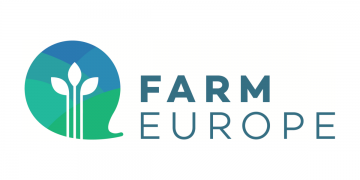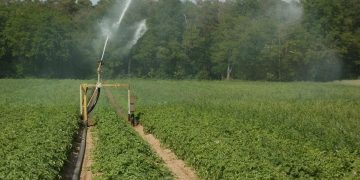European farmers, forest owners and their cooperatives stand at the heart of bioeconomy. They are essential to the successful implementation of the new European Bioeconomy Strategy published yesterday by the Commission. Copa and Cogeca call for concrete measures that empower primary producers and secure their central role in the transition to a sustainable, circular and competitive economy.
The implementation of the Bioeconomy Strategy must ensure the better integration of primary producers into bio-based value chains. Existing EU platforms, such as the Circular Bio-Based Europe Joint Undertaking (CBE-JU), must be boosted to continue actively involving farmers, forest owners, and cooperatives, providing them with the tools and funding necessary to drive innovation and sustainability. Cooperatives, in particular, have already demonstrated their ability to lead circular and sustainable bioeconomy projects and their contributions must be further promoted and supported to maximize impact.
Financing for the agriculture and forestry sectors linked to the bioeconomy cannot depend solely on the Common Agricultural Policy (CAP). The Strategy’s implementation should unlock dedicated support through research and innovation funds, investment mechanisms, and skills programs, while fostering synergies with Cohesion Policy and other EU instruments. Without diversified and accessible financing, primary producers and rural communities risk being left behind in Europe’s transition to a more competitive and resilient economy. Such investments should aim to support the creation and development of self-sustaining value-chains that adequately recognise and reward primary producers.
The Strategy must also address the persistent challenge of administrative burdens, as well as avoid duplication and unnecessary complexity. The agriculture and forestry sectors should be recognised not only as guardians of Europe’s ecological balance but also key providers of renewable biomass, which can replace fossil-based materials and fuels while advancing climate and industrial objectives. By reducing red tape and fostering an enabling environment, the EU can unlock the full social potential of these sectors, create jobs and revitalise rural economies.
The development of high-potential markets, such as bio-based plastics, textiles, chemicals, construction materials and fertilisers, depends on consistent supply of sustainable biomass by agri-forestry sector. For bio-based plastics and polymers we need starch, lignin, for textile from bio-based fibers and fabrics we need cotton, flax, hemp, wool and man-made cellulosic fibers from sustainably managed forests, for bio-based chemicals we need renewable biological resources derives from wood, algae and agriculture residues. For bio-based construction products we need wood, hemp, straw etc. and for bio-based fertiliser and plant protection products we need manure, microorganisms and natural substances. To scale up the bioeconomy, the EU must prioritize investments and innovation in agriculture and forestry, ensuring these sectors remain competitive and resilient
In addition to this important emerging lead markets, it must not ignore the foundational role of bioenergy, which remains the most important market for many companies in the bioeconomy and a vital component of the current energy mix. Without this crucial bioenergy market, there is little foundation to develop existing biorefineries to produce biobased chemicals, materials and plastics for instance. If the bioenergy market is phased out through different policy instruments and regulations, large parts of the existing bioeconomy industry risk being eliminated. The transition to other products and applications must occur by developing demand in these markets through the introduction of instruments that create demand, before any phase out of bioenergy is even considered.
Copa and Cogeca urge EU institutions and Member States to translate the Strategy’s ambitions into tangible actions ensuring that farmers, forest owners and cooperatives are at the heart of it. This includes strengthening the position of primary producers in bio-based value chains, diversifying funding sources, simplifying administrative procedures and fully recognising bioenergy while developing new bio-based markets.
Fonte: Copa Cogeca






















































